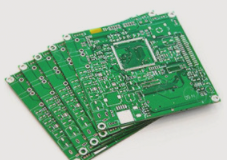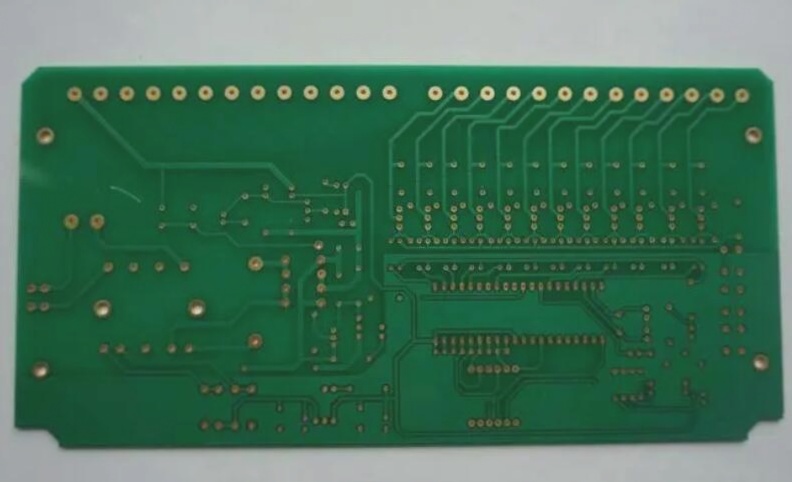Before PCBA processing, there is a step that many one-stop PCBA service providers often overlook: the baking of the PCB. This baking process effectively removes moisture from the PCB circuit board and electronic components. Once the PCB reaches a specific temperature, the flux can better bond with the components and pads, significantly enhancing the soldering effect. Now, let me explain the baking process involved in PCBA processing.
One. Guidelines for baking sheets in PCBA processing:

1. PCB circuit board baking requirements: the temperature should be maintained at 120 ± 5 degrees Celsius, with a typical baking duration of 2 hours. Timing begins once the target temperature is achieved. For specific parameters, refer to the applicable PCB circuit board baking specifications.
2. PCB board baking temperature and time settings:
(1) For PCBs sealed and unpacked within 2 months of the manufacturing date and exposed for more than 5 days, bake at 120 ± 5 degrees Celsius for 1 hour; (2) For PCBs manufactured between 2 to 6 months ago, bake for 2 hours at 120 ± 5 degrees Celsius; (3) For PCBs with a manufacturing date of 6 months to 1 year, bake for 4 hours at 120 ± 5 degrees Celsius; (4) Baked PCBs must be processed within 5 days; if not, they require an additional 1 hour of baking before being put online; (5) For PCBs older than 1 year from the manufacturing date, bake for 4 hours at 120 ± 5 degrees Celsius and reapply tin before going online.
3. PCBA processing and baking method:
(1) Large PCBs are typically laid flat, stacked up to 30 pieces. Remove the PCB from the oven within 10 minutes after baking is complete, allowing it to cool naturally at room temperature. (2) Small and medium-sized PCBs are also usually placed flat, with a maximum stack of 40 pieces, while vertical stacking is unrestricted. After baking, the PCB should be removed from the oven within 10 minutes and laid flat at room temperature for natural cooling.
4. Electronic components that are no longer needed after rework do not require baking.
2. PCBA processing and baking requirements:
1. Regularly verify that the material storage environment is within the specified parameters.
2. Staff must receive proper training.
3. Any abnormalities during the baking process should be promptly reported to the relevant technical personnel.
4. Anti-static and thermal insulation measures should be employed when handling materials.
5. Leaded and lead-free materials must be stored and baked separately.
6. After baking, materials must cool to room temperature before being processed or packaged.
3. PCBA processing and baking precautions:
1. Heat-insulating gloves must be worn when handling the PCB board directly.
2. Baking time must be strictly regulated to avoid being too long or too short.
3. The baked PCB board must be cooled to room temperature before it can go online.
The above outlines the baking process in PCBA processing. The PCBA processing facility is committed to continuously enhancing quality and providing customers with top-notch one-stop PCBA processing services.
One. Guidelines for baking sheets in PCBA processing:

1. PCB circuit board baking requirements: the temperature should be maintained at 120 ± 5 degrees Celsius, with a typical baking duration of 2 hours. Timing begins once the target temperature is achieved. For specific parameters, refer to the applicable PCB circuit board baking specifications.
2. PCB board baking temperature and time settings:
(1) For PCBs sealed and unpacked within 2 months of the manufacturing date and exposed for more than 5 days, bake at 120 ± 5 degrees Celsius for 1 hour; (2) For PCBs manufactured between 2 to 6 months ago, bake for 2 hours at 120 ± 5 degrees Celsius; (3) For PCBs with a manufacturing date of 6 months to 1 year, bake for 4 hours at 120 ± 5 degrees Celsius; (4) Baked PCBs must be processed within 5 days; if not, they require an additional 1 hour of baking before being put online; (5) For PCBs older than 1 year from the manufacturing date, bake for 4 hours at 120 ± 5 degrees Celsius and reapply tin before going online.
3. PCBA processing and baking method:
(1) Large PCBs are typically laid flat, stacked up to 30 pieces. Remove the PCB from the oven within 10 minutes after baking is complete, allowing it to cool naturally at room temperature. (2) Small and medium-sized PCBs are also usually placed flat, with a maximum stack of 40 pieces, while vertical stacking is unrestricted. After baking, the PCB should be removed from the oven within 10 minutes and laid flat at room temperature for natural cooling.
4. Electronic components that are no longer needed after rework do not require baking.
2. PCBA processing and baking requirements:
1. Regularly verify that the material storage environment is within the specified parameters.
2. Staff must receive proper training.
3. Any abnormalities during the baking process should be promptly reported to the relevant technical personnel.
4. Anti-static and thermal insulation measures should be employed when handling materials.
5. Leaded and lead-free materials must be stored and baked separately.
6. After baking, materials must cool to room temperature before being processed or packaged.
3. PCBA processing and baking precautions:
1. Heat-insulating gloves must be worn when handling the PCB board directly.
2. Baking time must be strictly regulated to avoid being too long or too short.
3. The baked PCB board must be cooled to room temperature before it can go online.
The above outlines the baking process in PCBA processing. The PCBA processing facility is committed to continuously enhancing quality and providing customers with top-notch one-stop PCBA processing services.




